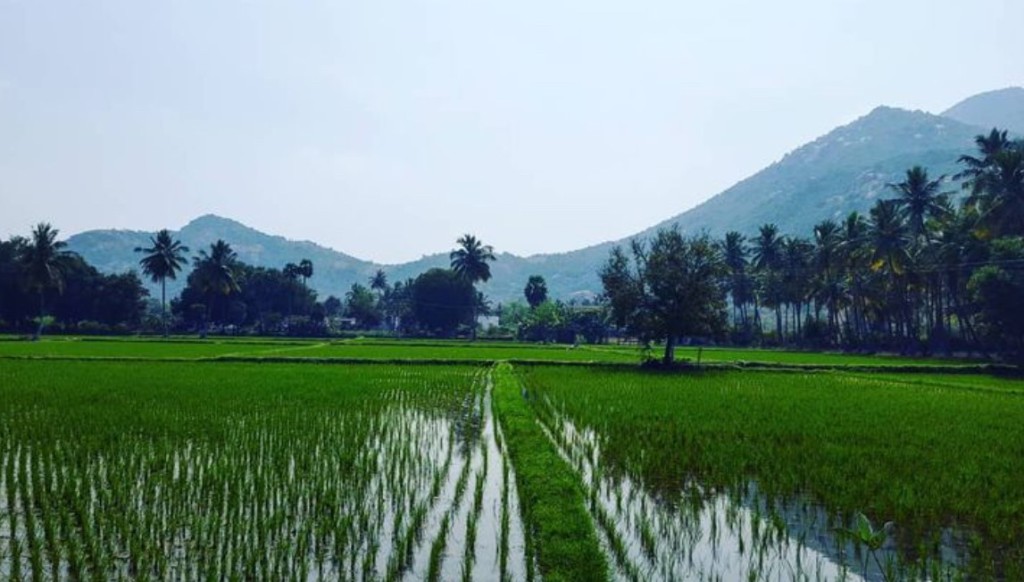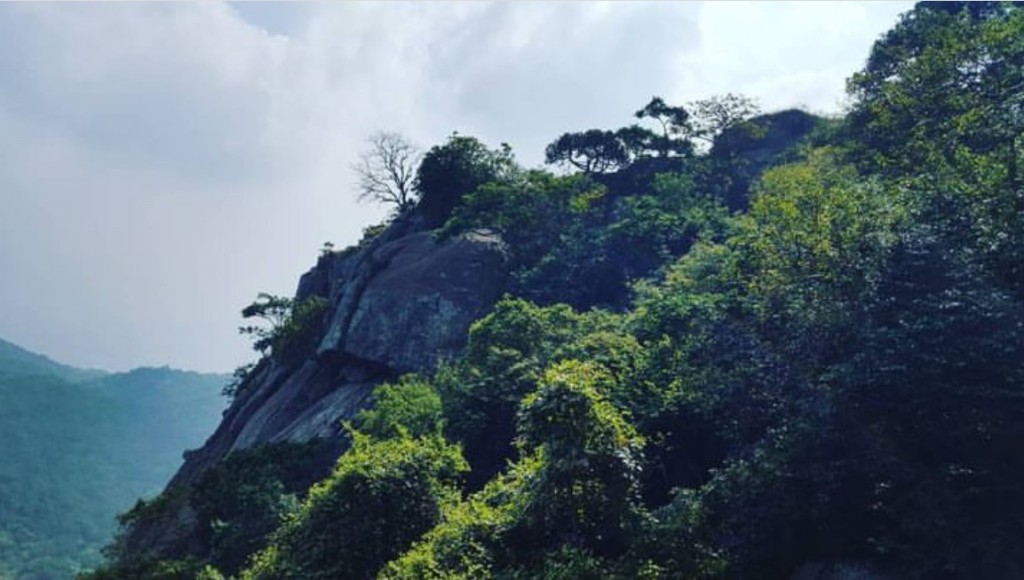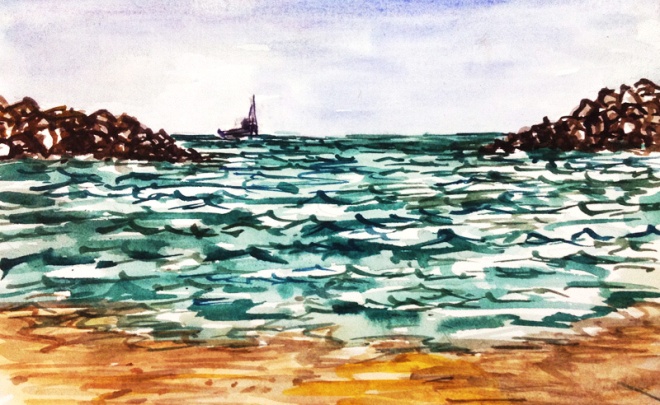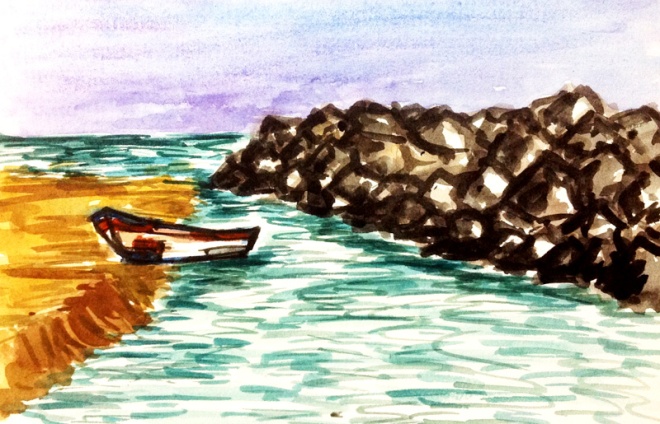During one of the trips to Tiruvannamalai, on work, my colleague and I drove to Padaivedu nestled at the foothills of the mist-soaked Jawadu range. We drove past coconut groves, sugarcane, paddy, and banana fields and arrived at Padaivedu. Sambuvaraiyars who ruled this region, in the 12th and 13th centuries chose Padaivedu as their capital because of its location between impregnable hills and dense forests.


Padaivedu steeped in myth as much as in history is home to many temples. We had the time to visit only one of them.


We drove up the hills called Kottai malai, the fort hill – the rocks tall and hanging precipitously, roots of huge trees clawing into the crevices or clambering the edges of the hills, to visit Venugopala swami temple.


We stayed up for half a day, exploring the level ground around the temple for a view of the chain of hills that go to form a part of the Eastern ghat. I took pictures and painted as monkeys athletically swung across trees, and screeched at my paintbox, wondering if it was something to snack on.




